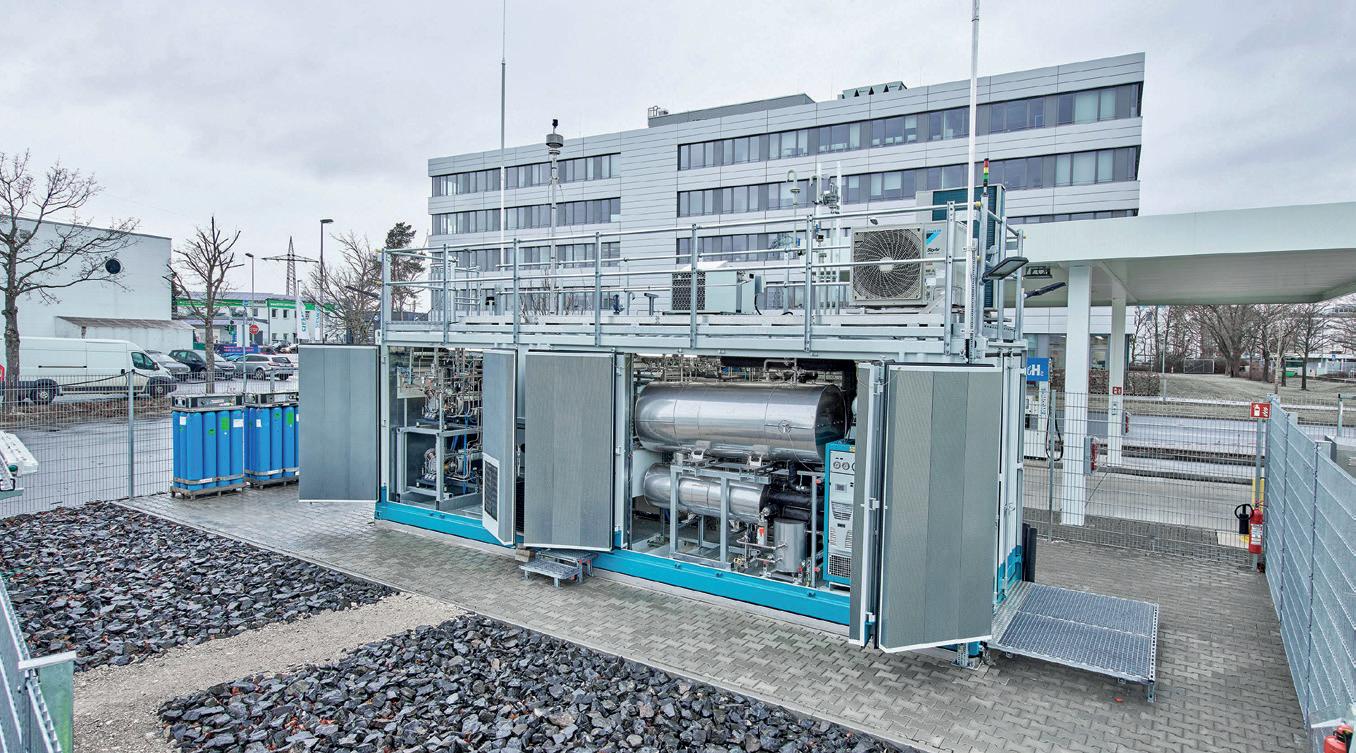
3 minute read
Data-driven decisions
Cameron LNG enhances process performance via Hint’s automated information management system
AUTOMATION is on the minds of most companies striving for more efficient operations, cutting the cost to run and maintaining business-critical process equipment. Automated information management system fine-tuning and client-software provider collaboration in response to ever-changing needs can meet multiple challenges, as Cameron LNG found out.
Advertisement
CAMERON LNG’S PROJECT
Cameron LNG recently installed new fiscal metering for gas chromatographs (GCs), which are analytical instruments that measure the content of various components in a sample of liquified natural gas (LNG). These metered instruments, used in the LNG separation and analysis phase, were added to an existing information management system (AML 4, provided by Hint) for monitoring purposes. The original scope of the project, delivered in 2019, entailed a basic AML implementation on three liquefaction trains to obtain LNG process measurements. The new metering equipment was purchased to comply with Cameron’s latest ship loading requirements. After a brainstorming session between Hint and Cameron, it was decided to build more functions into AML to specifically handle process performance monitoring in the novel environment. This led to automation enhancements that expanded the original software toolbox and, in so doing, improved monitoring efficiency and ultimately decision making.
CHALLENGE #1
Accurate data is key to ensuring pipeline integrity and the delivery of high-quality LNG product to the end customer. Cameron LNG had been following a procedure to monitor gas sample components and then check the validation as part of its ship loading process (i.e. custody transfer). When the analysed samples were deemed to be in the correct range, a report was signed off. However, the validation procedure lacked the desired detail. Best practices would show the relationship between the molecular weight and the measured individual components, according to the GPA 2261-13 standard. To meet the client’s needs, Hint programmed advanced analytics and a more detailed plot than traditionally used to show additional measured gas components in the context of molecular weight versus response factor.
CHALLENGE #2
Cameron LNG also needed to be able to judge the breadth of a component’s responses to three different gas blends. The principal method had been to view a gas chromatograph reading with two objectives: • Inject gases having a range of concentrations of each component of interest • Plot the resulting peak areas To meet this requirement, Hint modified the equation so that peak areas produced by each component concentration (or level) are now normalised and plotted in AML versus the component level concentration.
CHALLENGE #3
Cameron LNG wanted to produce GC Repeatability and Reproducibility reports calculated in real time, stored, displayed, and reported (per the GPA 2261-13 standard). Repeatability is the expected precision within a laboratory using the same equipment and same analyst. It is measured as the difference in analysed values between two sequential runs. Reproducibility is the expected precision when the same method is used by different laboratories using different equipment and different analysts. It is measured as the difference between two analysed values. To meet this requirement, Hint enabled the reference values of the certified gas composition to be entered into the AML system or retrieved from the gas chromatograph, if possible. The reference values are then compared with three GC readings to reduce the chance of outliers. AML then calculates the deviation between the reference and the GC readings, and finally checks if the readings exceed any limits or fail statistical analyses, such as data trends over time.
RESULTS
The fit-for-purpose functionality, compliant with the international standard for the Analysis of Natural Gas and Similar Gaseous Mixtures by Gas Chromatography, GPA 2261-13, was successfully incorporated into the AML system. The continual improvement and transition towards further automation took Cameron LNG from Excel spreadsheets to high-resolution visualisation, storage, and reporting of analytic data—all in one place. This next step in Cameron’s digital journey has enabled them to practice proactive data analyses that prevent errors, not only on trains but on ships as well. The proactive approach has resulted in higher quality LNG product, higher profits, and contributes to a safe, sustainable environment for employees and the planet, avoiding leaks, spills, etc. Overall, the AML enhancements delivered a more efficient way of working, regardless of location, with real-time data monitoring and analysis making real-time decisions a reality. Cameron LNG can now generate detailed plots and reports, as needed, and store them later for reference. Less time spent on creating and managing spreadsheets means more time to focus on higher-value tasks.
01
For more information:
www.hint-global.com
01 Camron LNG terminal










